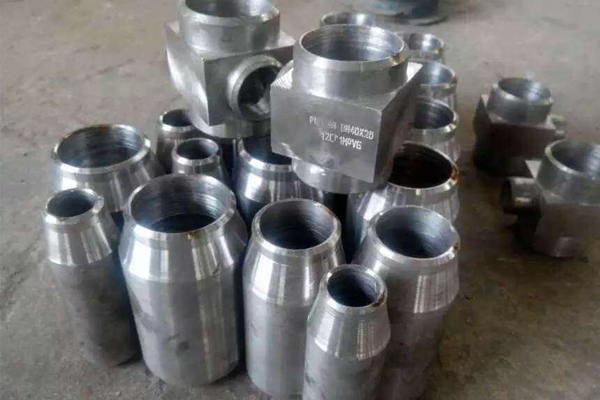Internal quality inspection of stainless steel forgings
Because stainless steel forgings are often used in the key position of the machine, so the internal quality of stainless steel forgings is very important. Because the internal quality of stainless steel forgings can not be tested by intuitive method, so special physical and chemical inspection means are used to test.
First, the mechanical properties of forgings
The mechanical properties of forgings are determined according to product requirements. The test methods are divided into hardness test, tensile test, impact test and fatigue test.
1. Hardness test
Hardness is the deformation resistance of material surface, it is an index that measures metal material soft hard. Hardness and other mechanical properties have a certain internal relationship, so other mechanical properties of materials can be estimated by hardness value. Hardness test does not need to prepare special samples, nor will it destroy the specimen, so hardness test is the most commonly used in the production of a mechanical property test method.
Commonly used hardness test methods and different values are: Brinell hardness (HB), Rockwell hardness (HRC), Vickers hardness (HV), Shore hardness (HS), and the corresponding hardness tester.
2. Tensile test
By applying the tensile load to the specimen of a certain shape by the tensile machine, the proportional elongation stress, yield point, tensile strength, elongation and reduction of section of the metal material are measured.
3. Impact test
The impact toughness of the metal was obtained by using a high-speed pendulum to impact the specimen with notch.
4. Fatigue test
The fatigue limit and fatigue strength of metal can be measured after repeated or alternating stress.
Two, non destructive inspection of forging
Nondestructive testing can be divided into radiographic testing, ultrasonic testing, magnetic particle testing, seepage testing and eddy current testing. Forgings are commonly used in ultrasonic testing and magnetic particle testing.
1. Ultrasonic inspection
Ultrasonic wave (frequency is generally greater than 20000Hz) will reflect and refract on the interface of different materials. Therefore, if there are defects of different materials in solid materials, wave reflection and attenuation will be generated. The existence of defects can be judged by waveform signals.
For large and medium forgings, ultrasonic testing is one of the important means of nondestructive testing.
2. Magnetic particle inspection
The defects such as cracks, pores and nonmetallic inclusions on and near the surface of forging can be examined by magnetic particle inspection. Because of its simple equipment, convenient operation and high sensitivity, this method is often used to test small and medium-sized die forgings produced in large quantities.
Three, low power and fracture test
Low power inspection is the sample after a certain amount of processing, and then with the naked eye in 10~30 times the magnifying glass to check the sample, so as to find the defects of stainless steel forgings. Streamline, dendrite, loose, naphthalene, stone fracture and other defects can be examined by cutting wafer samples and acid etching. In order to detect segregation, especially the uneven distribution of sulfide, sulfur printing method is used.
Four, high-power inspection
Stainless steel forgings will be made into a certain sample under a microscope to check the internal forgings (or fracture) on the state of the organization or microscopic defects. The internal structure and inclusions distribution of the forging can be checked by cutting the longitudinal sample. Surface defects such as decarburization, coarse-grained, carburized and hardened layers can be examined by cutting transverse samples.
